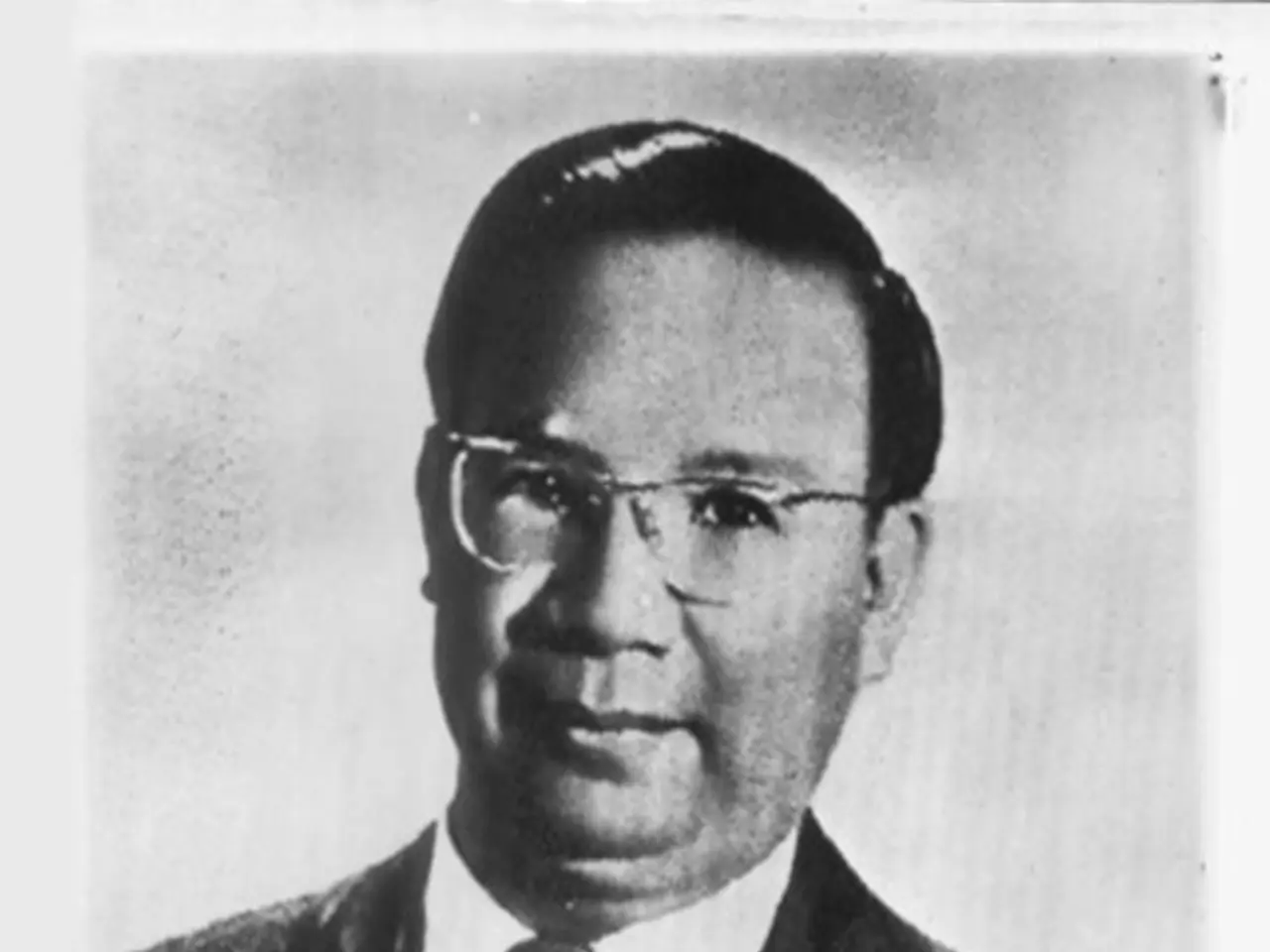Recovery Expectations for Pulmonary Embolism: An Overview
Recovering from a Pulmonary Embolism: A Guide
A pulmonary embolism (PE) is a serious condition that occurs when a blood clot travels to the lungs. Here's what you need to know about recovering from a PE.
Symptoms and Treatment
People typically start to notice improvements in their symptoms once treatment begins. If you experience any symptoms of a pulmonary embolism, such as sudden shortness of breath, sharp, stabbing pain in the back or chest, pain worsening with deep breaths, rapid heart rate, unexplained cough or cough with blood and mucus, call 911 immediately.
Treatment usually involves taking blood thinning medication to prevent further clots from forming and to help dissolve existing clots. The body breaks down the existing clot on its own with the help of anticoagulants, but they do not dissolve the clot.
Recovery and Prevention
Most people will make a full recovery after a pulmonary embolism and do not experience long-term complications. However, the recovery time can range from several months to years.
To lower the risk of further blood clots, people can quit smoking, reach or maintain a moderate weight, exercise regularly, get up and move around every 2-3 hours when sitting or lying for long stretches of time. During long journeys, people can move every 2 hours for at least 5 minutes and drink plenty of fluids to help with circulation. Gentle exercise such as swimming and walking can be suitable for recovery from a pulmonary embolism.
If you need to travel after experiencing a blood clot, you may need to wait a few weeks. A doctor can help decide when it is safe to travel again. People taking anticoagulants may also need to avoid alcohol, aspirin, and some over-the-counter sleeping pills to reduce the risk of bleeding.
Potential Complications
Some people develop post-thrombotic syndrome, chronic damage to the lungs (CTEPH), further clots, mental health conditions such as anxiety, depression, or post-traumatic stress disorder. People with breathing difficulties 6 months after having a pulmonary embolism should speak with a doctor. This can be a sign of CTEPH.
People taking anticoagulants may need to avoid foods high in vitamin K, such as kale, collard greens, spinach, beef liver, and pork chops. If you have to undergo long periods of bed rest, you can wear compression stockings or cuffs around the legs, raise the lower end of the bed, try small movements to keep blood flowing in the legs, and move around as soon as it is possible.
Length of Hospital Stay
The average hospitalization length for patients with PE is typically around 7 days, based on data from a study reporting an average hospital stay of 7 days for venous thromboembolism (VTE) patients, which includes PE cases[4]. Although not explicitly covered in the search results, evidence-based guidelines and various studies support outpatient management for carefully selected low-risk PE patients, reducing hospitalization necessity.
If you have any concerns or questions about your recovery, always consult with your doctor.
[4] https://www.ncbi.nlm.nih.gov/pmc/articles/PMC6111837/
- Beyond the complications of a pulmonary embolism, one must be mindful of chronic diseases such as COPD or NSCLC, as they can be potentially predictive of further health issues.
- In the journey of health and wellness, managing multiple medical conditions like sclerosis, depression, or obesity can be challenging, especially when coping with a chronic pulmonary disease or Crohn's disease.
- Science continues to uncover newer therapies and treatments for various chronic diseases like multiple sclerosis and NSCLC, potentially paving the way for improved patient outcomes.
- While recovering from a pulmonary embolism, it's essential to adhere to the prescribed medical treatment and follow preventive measures to avoid complications such as further clots, mental health conditions, or even diseases like AQ deficiency.
- In addition to the treatments and medications, maintaining a healthy lifestyle, such as exercising regularly, quitting smoking, and managing weight, can play a crucial role in speeding up the recovery process for pulmonary embolism as well as other chronic diseases like obesity.
- It's important to remember that long-term complications like post-thrombotic syndrome or CTEPH can stem from chronic diseases such as obesity or Crohn's disease, and people should consult their doctors, if needed, to address these issues in their recovery plan.
- When living with or recovering from pulmonary embolism, paying attention to dietary considerations, like avoiding foods high in vitamin K or maintaining a well-balanced meal plan, can help promote overall health and well-being, along with managing other chronic diseases like NSCLC or multiple sclerosis.




